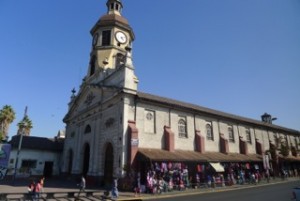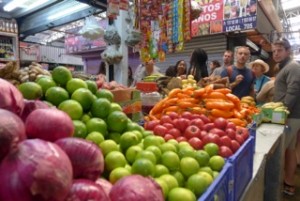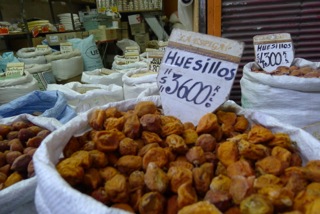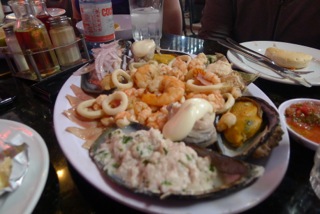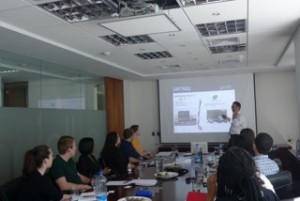- March 3, 2015
- 7:30 pm
- Mary Ann McGrath
- no comments
Santiago: A City of Change & Innovation
From our student guest blogger, Abbey Rosenwinkel:
To better understand the culture of a city, you have to be willing to travel to locations that can’t be found on Trip Advisor. On Monday morning we traveled down to the once economically booming neighborhood of Recoleta to see some of the local food markets. Recoleta at one time was known as the coolest part of Santiago. The night life existed there, making Recoleta the birth place of a great deal of Chilean music and art. Over the years the area has changed greatly and is now a place not often visited by tourists due to the poverty. It is mainly known for its markets that draw in large restaurant owners and low income families because of the economic prices and the large quantities of fresh produce. In the “Vega” market and the “Mercado Central,” you can buy everything from avocados and dried peaches to cow tongue and squid. Some of the most common food items sold in Santiago include avocados, tomatoes, pumpkin, chimayo (a local fruit), dried peaches, beef, and a large variety of fish. It was important and beneficial to see different parts of the city to truly understand the varying economic situations in Santiago. Since we are staying the business center of the city, it could be easy to see only one side of such a diverse city.
After a morning of exploring the markets, we went on our first company visit. Energía Llaima is an independent power producer company that currently works on small/medium projects in hydro and solar power. Energía Llaima has an impressive business structure and is known for sustainable practices and their desire to help the communities where they work. Their business model is to “develop, build, and operate” their projects under specific project criteria. The three main goals for their projects are to add value to the area, to have a positive environmental influence, and to positively influence the community. Ian Nelson, the CEO of Energía Llaima, explained that successfully fulfilling all of the criterion requires creativity and commitment. They must be flexible and innovative in their implementation of projects. When entering into new communities, Energía Llaima is very conscious of the local peoples. They desire to “be part of their lives” and to support them in tough times. A few examples of supporting the local community included providing food for the animals after some volcanic ash affected the region and cleaning the rivers while implementing their new projects. They also work hand in hand with the local Mapuche tribes who are native to the andes of Chile. For one project Ian explained that prior to working in the area, the tribe held a “river ceremony” in which they asked the river how he felt about the project. Energía Llaima wanted to be respectful to the indigenous people and honor them in their business decisions. Our experience at Energía Llaima helped us to have a better idea of development this country and to see the necessity for growth and sustainability.
Hablamos pronto,
Abbey Rosenwinkel
